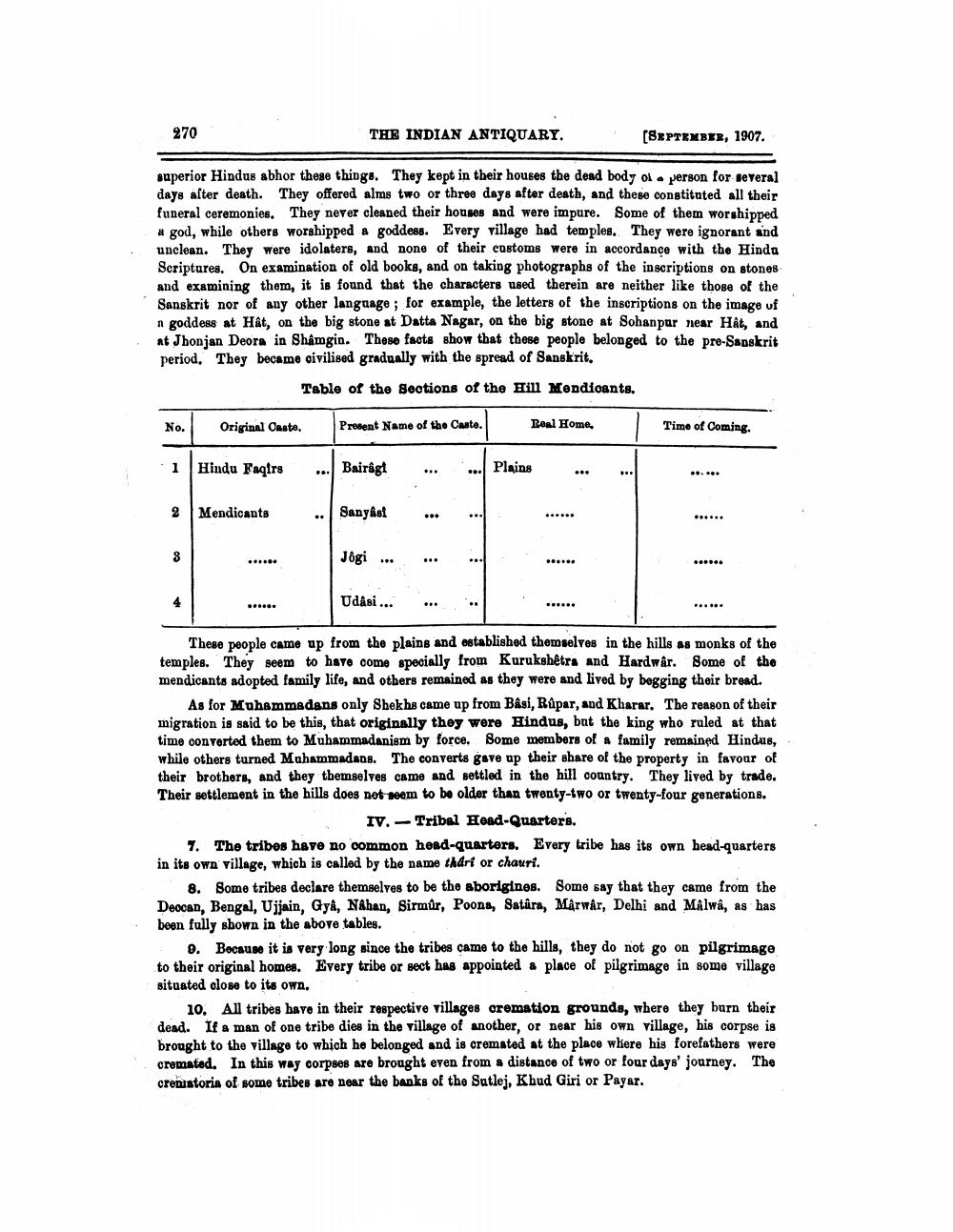________________
270
THE INDIAN ANTIQUARY.
(SEPTEMBER, 1907.
superior Hindus abhor these things. They kept in their houses the dead body of a person for several days after death. They offered alms two or three days after death, and these constituted all their funeral ceremonies. They never cleaned their houses and were impure. Some of them worshipped * god, while others worshipped a goddess. Every village had temples. They were ignorant and unclean. They were idolaters, and none of their customs were in accordance with the Hinda Scriptures. On examination of old books, and on taking photographs of the inscriptions on stones and examining them, it is found that the characters used therein are neither like those of the Sanskrit nor of any other language ; for example, the letters of the inscriptions on the image of a goddess at Hát, on the big stone at Datta Nagar, on the big stone at Sohanpur near HÂt, and at Jhonjan Deora in Shamgin. These facts show that these people belonged to the pre-Sanskrit period. They became civilised gradually with the spread of Sanskrit.
Table of the sections of the Hill Mendioante.
No.
Original Caste.
Present Name of the Caste.
Real Home
Time of Coming.
1
Hindu Faqirs
... Bairagt
...... Plains
.....
2
Mendicants
..
Sanyast
Jogi ...
...
Udási ...
...
..
These people came up from the plains and established themselves in the hills as monks of the temples. They seem to have come specially from Kurukshetra and Hardwar. Some of the mendicants adopted family life, and others remained as they were and lived by begging their bread.
As for Muhammadans only Shekhe came up from Basi, Rupar, and Kharar. The reason of their migration is said to be this, that originally they were Hindus, but the king who ruled at that time converted them to Muhammadanism by force. Some members of a family remained Hindus, while others turned Muhammadans. The converts gave up their share of the property in favour of their brothers, and they themselves came and settled in the hill country. They lived by trade. Their settlement in the hills does not seem to be older than twenty-two or twenty-four generations.
IV. - Tribal Head-quarters. 7. The tribes have no common head-quarters. Every tribe has its own head-quarters in its own village, which is called by the name thdrf or chauri.
8. Some tribes declare themselves to be the aborigines. Some say that they came from the Deocan, Bengal, Ujjain, Gya, Nahan, Sirmûr, Poona, Satüra, Marwar, Delhi and Malwâ, as has been fully shown in the above tables. = 0. Because it is very long since the tribes came to the hills, they do not go on pilgrimage to their original homes. Every tribe or sect has appointed a place of pilgrimage in some village situated close to its own.
10. All tribes have in their respective villages cremation grounds, where they burn their dead. If a man of one tribe dies in the village of another, or near his own village, his corpse is brought to the village to which he belonged and is cremated at the place where his forefathers were cremated. In this way corpses are brought even from a distance of two or four days' journey. The crobiatoria of some tribes are near the banks of the Sutlej, Khud Giri or Payar.




